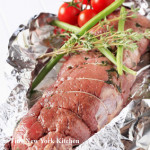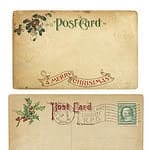Cut Into Pieces (like you would broccoli)
Steam
Add 1 to 2 Tablespoons, Butter, Ghee or Clarified Butter
Add 1 Tablespoon Spice Mixture Of Your Choice
OR
Preheat Oven to 425 degrees. Line Baking Sheet With Parchment Paper
Scatter Pieces Onto Baking Sheet
Drizzle With Olive Oil
Season With Kosher Salt & Pepper
Place In Oven 15 to 20 Minutes Until Tender
“Work With What You Got!”
©Tiny New York Kitchen © 2018 All Rights Reserved
One of the great things about winter is soup weather. I make all sorts of soups and stews. If I make a Sunday roast then the next week I usually make a stew. Soups and stews are a perfect way to use leftovers and they make great next day lunches. Be creative and make up different soups with what you have on hand. Remember “Work With What You Got!”
“Work With What You Got!”
©Tiny New York Kitchen © 2018 All Rights Reserved
I can’t think of a better way to warm up than by a roaring fire in the evenings!
“Work With What You Got!”
©Tiny New York Kitchen © 2018 All Rights Reserved
Tiny New York Kitchen Wishes You & Your Family A New Year Filled With Prosperity, Joy, And Contentment. Wishing You A New Year Rich With The Blessings Of Love, Joy, Warmth, And Laughter. Wishing You Good Health, Happiness, And Success In The Coming Year And Always. Wishing You A Very Happy 2018!
“Work With What You Got!”
©Tiny New York Kitchen © 2018 All Rights Reserved
Tiny New York Kitchen Wishes You & Your Family A Very Merry Christmas
Standing Beef Rib Roast
How Much To Buy: A 54 to 5 Pound Roast Serves 8 to 10
Keep meat at room temperature for an hour or so. Preheat oven to 450 degrees. Rub roast with lots of olive oil, cracked peppercorns, minced garlic, kosher salt, and 2 tablespoons of an herb or spice rub, if desired. Place roast meat-side down in a roasting pan and cook 30 minutes. Reduce heat to 425 degrees. Continue roasting for about 3 minutes per pound. Turn oven back up to 450 degrees and roast another 15 minutes, or until meat thermometer reaches 125 degrees for rare, 140 degrees for medium-rare or 160 degrees for well-done. Remove from oven and let rest 15 minutes. Skin fat from juices, and pour some dry red wine into the pan with the drippings. Over a low heat, stir wine, scraping up any browned bits on bottom of pan. Serve over roast as a sauce.
Roasted Beef Tenderloin
How Much To Buy: A 4 to 5 Pound Tenderloin Serves 8
Position oven rack in center. Preheat oven to 425 degrees. Lightly oil a roasting pan. Mix 2 tablespoons olive oil, 1 tablespoon minced garlic, 2 teaspoons each of rosemary and thyme, and kosher salt and freshly ground pepper to taste. Rub over entire surface of meat. Place meat into roasting pan and cook until thermometer inserted into thickest part of the roast reads 125 degrees for rare, 140 degrees for medium-rare or 160 degrees for well-done. This should take 35 to 55 minutes. You may baste with pan juices halfway through cooking, if desired. Remove from oven. Let rest 15 minutes and serve.
“Work With What You Got!”
© Victoria Hart Glavin Tiny New York Kitchen © 2017 All Rights Reserved
Although religiously themed prints made by wood carvers date back to the Middle Ages, the Christmas card is a relatively recent tradition. The widespread exchange of homemade Christmas cards began in Britain in 1840, with the introduction of the first postal service, the Penny Post. The man who played a key role in setting up the Penny Post, Sir Henry Cole, commissioned London artist John Calcott Horsley to produce the first commercially printed Christmas card in 1843. One thousand copies of the card, which depicted a family party and scenes of the poor being clothed and fed, with the inscription “A merry Christmas and a happy New Year to you,” were placed on sale. The tradition took off over the next few years as printing methods improved and, by 1860, large numbers were being produced and mailed in Europe. In 1875, lithographer Louis Prang became the first printer to produce Christmas cards in the United States. Today approximately 2.2 billion Christmas cards are mailed each year.
“Work With What You Got!”
© Victoria Hart Glavin Tiny New York Kitchen © 2017 All Rights Reserved
The origins of the Yule log can be traced back to the Norsemen of northern Europe. Jol or Jule (pronounced “Yule”) was a festival celebrated on the Winter Solstice in honor of Joinir, also known as Odin, the god of ecstasy and death. Feasting and drinking would take place around bonfires, and fires would be lit in hearths.
This tradition spread to other parts of Europe, where tree worship was already part of pagan rituals. Households would venture into the woods on Christmas Eve and cut a log from an oak tree, which was then transported home, with much singing and merrymaking along the way. The log would be put on the fire, which would be kept burning for twelve days. This was believed to bring health and productivity to the family and their crops for the coming year and protect them from witchcraft and demons. When the fire was finally extinguished, a small piece of wood would be kept and used to light the next year’s log. Often the ashes would be scattered over the fields to ensure fertility.
Later on, the yule log was used as a decorative centerpiece for the Christmas table, and as stoves replaced giant household hearths, the pastry or chocolate logs we are familiar with today came into being.
“Work With What You Got!”
© Victoria Hart Glavin Tiny New York Kitchen © 2017 All Rights Reserved
The practice of hanging up stockings can be traced back to pre-Christian times. Germanic folklore tells of the god Odin’s annual Yuletime hunting party. Children would leave out their shoes filled with straw or sugar for Odin’s flying horse, and Odin would reward them by leaving small gifts in exchange. Later on, the practice was linked with Saint Nicholas. The story goes that a nobleman with three daughters had fallen on hard times and was unable to give his daughters dowries so that they could be married. Saint Nicholas wanted to help, but also remain anonymous, so he threw gold coins down the chimney. They landed in the girls’ stockings that had been hung by the fire to dry.
“Work With What You Got!”
© Victoria Hart Glavin Tiny New York Kitchen © 2017 All Rights Reserved
It is indeed, the season of regenerated feeling – the season for kindling, not merely the fire of hospitality in the hall, but the genial flame of charity in the heart. – Washington Irving
“Work With What You Got!”
© Victoria Hart Glavin Tiny New York Kitchen © 2017 All Rights Reserved















